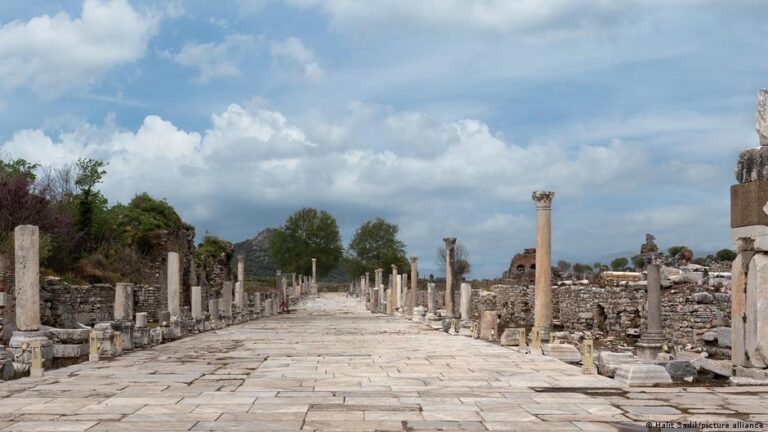“All roads lead to Rome!” Roads were the lifeline of the Roman Empire, stretching from Britannia to North Africa — people settled along those roads; armies, travelers, goods, knowledge and power passed along them — into the furthest corners of the empire. To this day, the Roman road network continues to shape large parts of Europe, the Middle East and North Africa.
Now, an enormous new digital research project is fundamentally changing the way we look at that antique infrastructure. The international academic team behind Itiner-e has created the first high-resolution open-data set mapping the entirety of the Roman Empire’s road network. In all, they have been able to digitally map 299,000 kilometers (186,000 miles) of roads, crisscrossing about 4 million square kilometers of the former empire — almost doubling the length of those roads previously thought to have existed.
Itiner-e: Digitally mapping the ancient world
In order to digitalize the network, trusted sources were studied. Researchers scoured archaeological sites, travel journals and centuries-old road maps, such as the Tabula Peutingeriana. The historical clues found in these were then compared with modern aerial and satellite imagery to create the Itiner-e.
Traces of the previous division of lands (Centuriation) — recognized not by walls or ditches but rather by parcels, since the Romans equally divided new and conquered areas into orderly rectangular plots — the checkerboard patterns of which are still recognizable as paths, roads or boundaries today. Those patterns are still easily recognizable in aerial photos, cadastral maps and even on hikes; especially in northern Italy, southern France and Tunisia.
In the end, researchers assembled 14,769 individual segments into one highly detailed (accurate up to 50 meters, or 164 feet) geo information system or GIS — meaning that every single section of road is linked with regional metadata, quality indicators, sources and a digital link to information on prior antique settlements. This provides, for the first time, a more comprehensive understanding of how mobility, administration, and even illness were distributed within the empire.
https://www.youtube.com/watch?v=watch
Digital methods and archaeological detective work
Beyond covering more than 100,000 kilometers of main roads, researchers also mapped another 195,000 kilometers of secondary roads, visualizing mobility in the farthest and tiniest reaches of the empire.
Another new impulse provided by the team was the use of digital models to simulate the speed, route, and physical impediments of paths traversing difficult terrain.
Roads: The foundation of the Roman Empire’s power and mobility
Another novelty of Itiner-e is that it also illustrates how the logistic prowess of the Romans allowed for the massive expansion of their empire — enabling trade, intellectual exchange and military control of vast lands. The more than 100,000 kilometers of main roads that coursed through the empire were dotted with mile markers, military targets and administrative centers, and thus well documented.
The sprawl of secondary roads mirrors developments in regional economies and everyday mobility. In evaluating the data, researchers found that some areas possess clear traces of the network even today, while others are reconstructed with digital demarcations based on regional historical lore. In all, the project throws open the door for potentially fruitful future investigation.
Mapping the unknown: Why Roman roads remain puzzling
The Itiner-e road atlas also tells a history of uncertainty — though most roads can be found documented in written sources, their exact routes are often unknown. That is because of the various accounts that have been passed down, or the topographical changes and natural expansion of the road network over the centuries.
Researchers say that only 2.7% of the roads can be mapped with archeological certitude. In almost 90% of cases, researchers can only lay out a “likely” route. When it comes to the last 7.4% of roads, scientists can only posit “hypothetical” routes that roads would have had to follow.
The map’s data set lays this out transparently in its “Confidence Maps,” something entirely new to archaeological research. These maps highlight specific regions or road segments that could use improvement to their archaeological excavation sites as well as mapping sources.
To remeasure Roman roads is to rewrite European history
One thing the Itiner-e project makes clear is that the roads of history are far longer and labyrinthine than previously thought.
With it, researchers have exposed massive gaps while at the same time opening up new paths for exciting stories and insight. Every archaeological gap is an invitation to keep digging.
This article was translated from the original German by Jon Shelton


